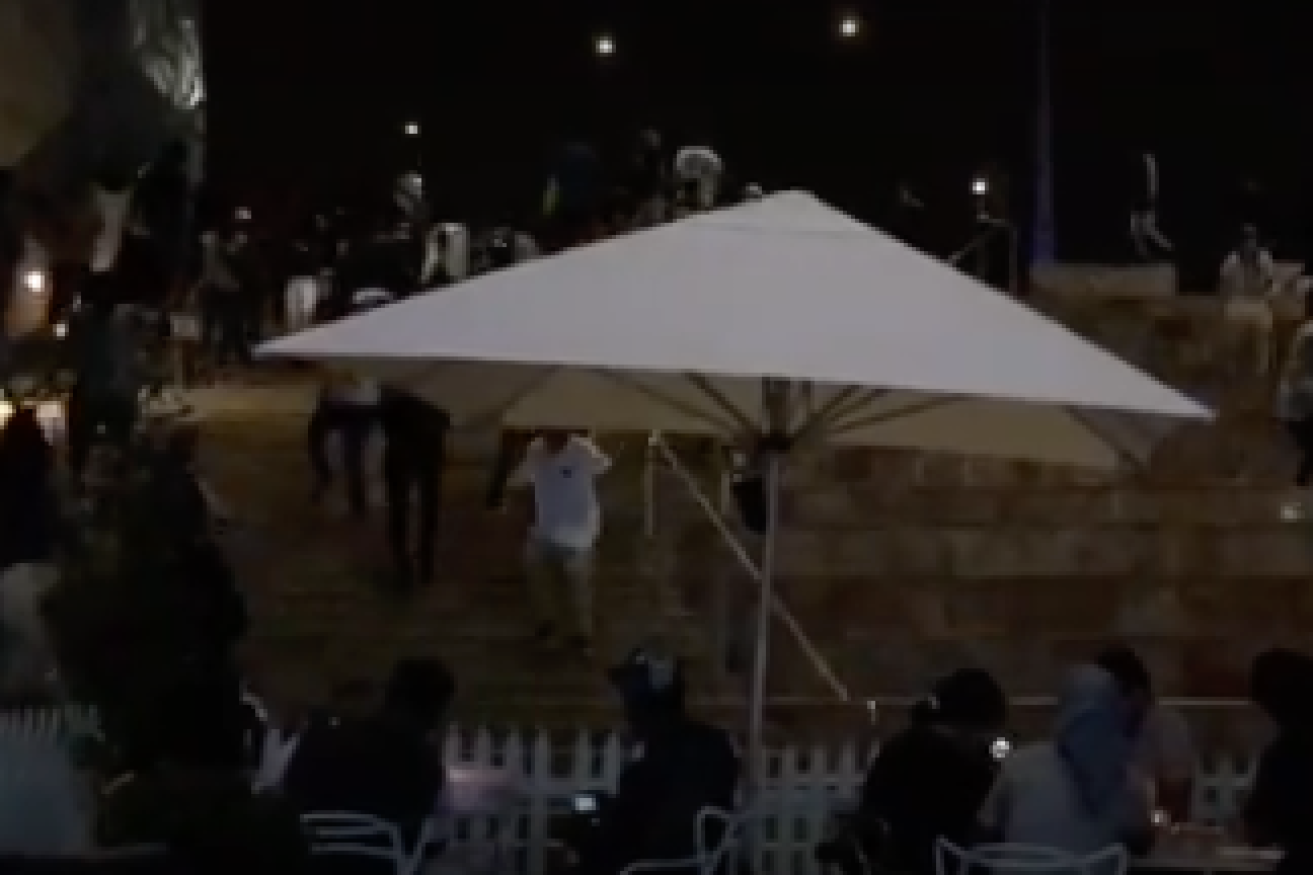Violent gang chaos ‘to be more frequent’

Youths scramble down steps at Federation Square, presumably from police. Photo: YouTube.
The violent brawls that forced police to lock down parts of central Melbourne and Sydney at the weekend will become increasingly common in Australian cities in the years ahead, warns a leading criminologist.
While police hunted those responsible for a series of riotous confrontations that saw capsicum spray and batons used on warring ethnic groups in downtown Melbourne on Saturday night, officers were on stand-by late on Sunday after threats of a reprisal were made on Facebook.
In Sydney, a vicious fight between two men outside a concert venue early on Sunday morning grew into a rolling street battle involving dozens of combatants, with police calling for reinforcements to quell the fighting. Just 24 hours earlier, a group of women celebrating a hen’s night were allegedly attacked by two men, who will appear in court in April.
• Melbourne and Sydney erupt in violence
• Secret Service leap to protect frightened Trump
• The People vs OJ Simpson: gripping true crime
Professor Allen Perry, a lecturer in criminology at the University of Adelaide, says random outbreaks of public violence involving ethnic gangs and other groups will become more frequent in densely populated urban centres.
“The reason why there appears to be an increase in youth violence … is because of changes in socialisation, particularly through family and early environments,” Professor Perry told The New Daily.
“This has occurred through the last 20 to 30 years – the self-discipline that is the product of a stable family environment has significantly declined.
“So that, in broad strokes, is why we are going to increasingly see [more frequent occurrences] of this type of urban youth violence.”
Mr Perry said children were growing up “more inclined to impulsive behaviour”, which he claimed led to criminality, specifically through violence and aggression.
Chairs from nearby cafes in Swanston St were used as weapons in last night’s. Shocking scenes #Melbbrawl #Melb pic.twitter.com/tMwFpoPa3w
— Rusty (@russmulry) March 13, 2016
Large-scale aggression
In Melbourne, the CBD was shut down near the corner of Flinders St and Swanston St as a fight erupted between gangs – the ‘Apex’ and ‘Islander 23’ groups. The fight started at nearby Federation Square, reportedly involving up to 200 people.
The groups, Apex and Islander 23, have been reported as “teenage street gangs” and it was reported the former was made up of African youths. Pacific Islander teenagers reportedly made up the other gang.
It was not the first time African and Pacific Islander gangs had gone head-to-head in Melbourne. In 2007 it was reported the groups engaged in a number of clashes.
Crowds, including families, attending the annual Moomba Festival were forced to seek cover before police broke up the melee using capsicum spray.
Police also received reports of robberies in the CBD related to the “large group of youths fighting”.

Youths scramble down steps at Federation Square, presumably from police. Photo: YouTube.
It is believed the confrontation was organised via social media application Snapchat.
Chairs were reportedly hurled across City Square on Swanston St, bringing traffic and trams to a standstill.

Two men have been arrested after the chaos in Sydney. Photo: ABC
Police said no weapons were involved in Sydney and it was unknown what provoked the violence.
Sydney’s nightlife has been hotly debated recently, with protests against lockout laws restricting alcohol sales and admittance to licensed venues in some areas.
Brisbane passed similar laws in February while Victorian Premier Daniel Andrews had stated he would not support such legislation in Melbourne.
Why youths fight, commit violence
Former Deakin University lecturer and expert in criminology Neville Millen said gangs were regularly borne out of factors like location, class, race and socio-economic circumstances.
“Gangs form by close association of people who live in similar neighbourhoods with similar backgrounds and life chances, or disadvantages, and usually they’re related by age,” Mr Millen told The New Daily.
“To control or modify behaviours you need to go into areas and see and try and change the factors leading them to behave poorly.”
He said underprivileged or neglected young members of society sought comfort in groups, often leading to gang trouble.
-with ABC









